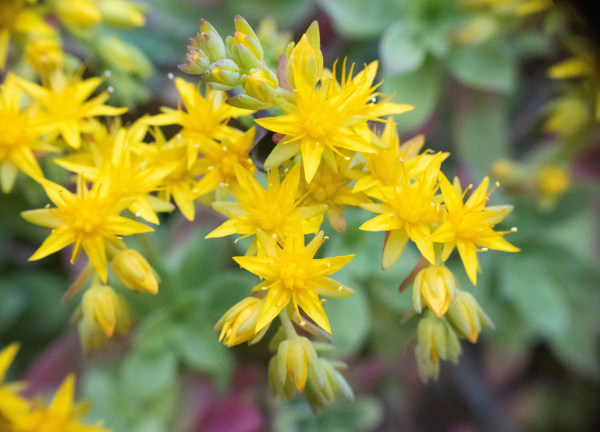How to grow Sempervivum
This member of the stonecrop family contains around 40 species of dense, ground-hugging evergreen perennials, valued for their rosettes of thick, succulent, pointed leaves.
‘Sempervivum’ means ‘always alive’ and is a reference to the remarkably tough nature of this plant which is tolerant of both drought and extreme temperatures. Indeed, it is one of the few succulents hardy enough to survive a UK winter outside.
Sempervivum is also known by the common name of houseleek, arising from the ancient practice of growing it on the roof of a house – reportedly to protect against lightning. This was thought to have been introduced by the Romans, and continues to this day as part of the current trend for ‘green roofs’.
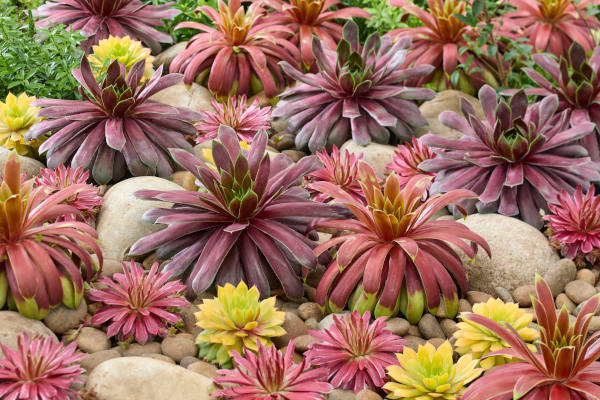
Zantedeschia is a genus of flowering plants from the family Araceae and is native to southern Africa. With a rich history dating back to the Ancient Romans, these deciduous or semi-evergreen perennials have been used as a symbol of celebration. Zantedeschia was Named after Professor Giovanni Zantedeschia, an Italian botanist.
There are two main forms of Zantedeschia: hardy and tender. Hardy forms of the plant can be grown outdoors, enjoy moist soil and full sun or partially shaded conditions - these are known as Arum lilies. Tender forms of Zantedeschia prefer being grown in containers or pots and should be brought inside over the winter - these are known as Calla lilies.
With tuberous flora in all colours from whites, yellows and oranges to deep reds and purples, Zantedeschias are not to be overlooked in any garden, as long as they have sufficient sunlight to grow in.
Ready to learn more about growing Zantedeschia? Read on for all there is to know...

Key Information
Soil pH
Position
Hardiness

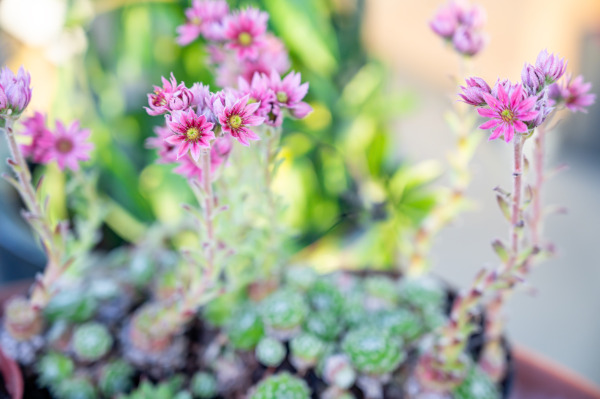
Where & when to plant Sempervivum
Position - Full sun
Soil - Sharply drained
Flowering Period - Summer
Hardiness - Hardy
Sempervivum can be planted at any time of year, though spring is ideal to allow time for it to become well-established before winter.
Sempervivum is the ultimate, fuss-free plant for a sunny, well-draining spot such as a rockery, wall crevice, trough, or container. Avoid heavy, clay soils or anywhere prone to waterlogging.
Whilst fully hardy, the softly hairy species (often advertised as ‘cobweb’ types or similar) resent winter wet and are best grown in a container so they can be overwintered indoors.
Sempervivum can be grown as an individual specimen, or together with several different cultivars to form a mosaic of colours and patterns.
How to plant Sempervivum
In the ground
- Clear the chosen area of weeds.
- Dig a planting hole several times larger than the root ball. Now is the time to add plenty of sand or horticultural grit to the planting hole and mix thoroughly.
- Place the plant in the hole, ensuring the top of the root ball sits level with the surface of the soil. Too low and the plant may rot, too high and the roots can dry out.
- Backfill with soil and firm in gently.
- Soak well with water.
- Mulch around the base with horticultural grit.
In a container
- Choose an appropriate container (sempervivums are shallow rooted, so this need not be particularly deep). Ensure there are plenty of drainage holes in the bottom.
- For best results use a compost specifically for cacti and succulents, which contains just the right levels of drainage and nutrients. Alternatively, mix plenty of horticultural grit into any good quality potting compost (aiming for a 50:50 ratio). If not already present in the compost, add some slow release fertiliser granules.
- Start by partially filling the pot with compost; enough so that when placed on it the upper surface of the root ball is about 3cm lower than the top of the pot.
- Infill all the space surrounding the root ball with compost, firming down with your fingers then adding a little more so the plant is held tight.
- Pick up the pot and lightly tap on the potting bench or ground a few times to help further settle the compost around the plant.
- Soak well with water.
- A mulch with horticultural grit will look attractive and help to prevent a ‘cap’ or crust forming on the top of the compost (something container plants can suffer due to the artificial nature of their watering).
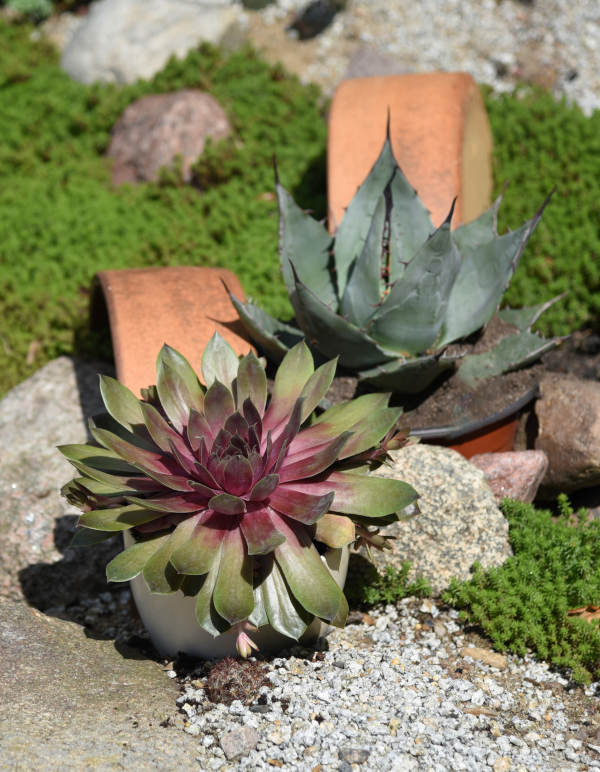
What to plant with Sempervivum
For a truly low-maintenance, year-round container display, combine with a selection of pots filled with other hardy, evergreen succulents. We recommend Sedum album, delosperma, and lewisia.
In a rockery, suitable planting partners include anything with a similar shallow rooting system and preference for a sunny, free-draining spot. Our favourites are laurentia, creeping thyme, Campanula portenschlagiana, origanum, and aethionema.
When planting sempervivum in a rockery, wall, or trough, we recommend planting several different cultivars together. The variety of colours and textures elevates things from ‘good’ to ‘spectacular’!

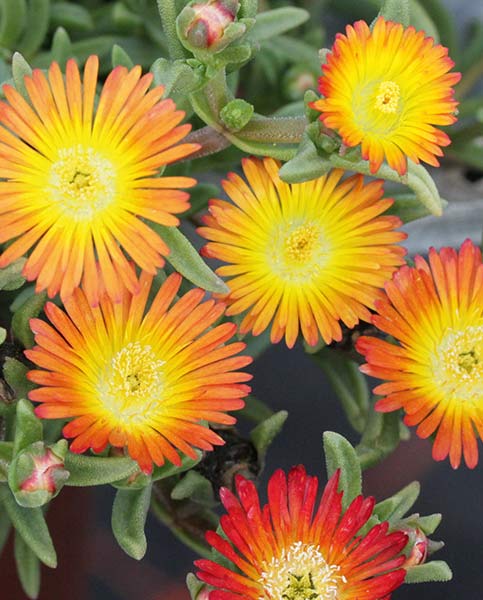
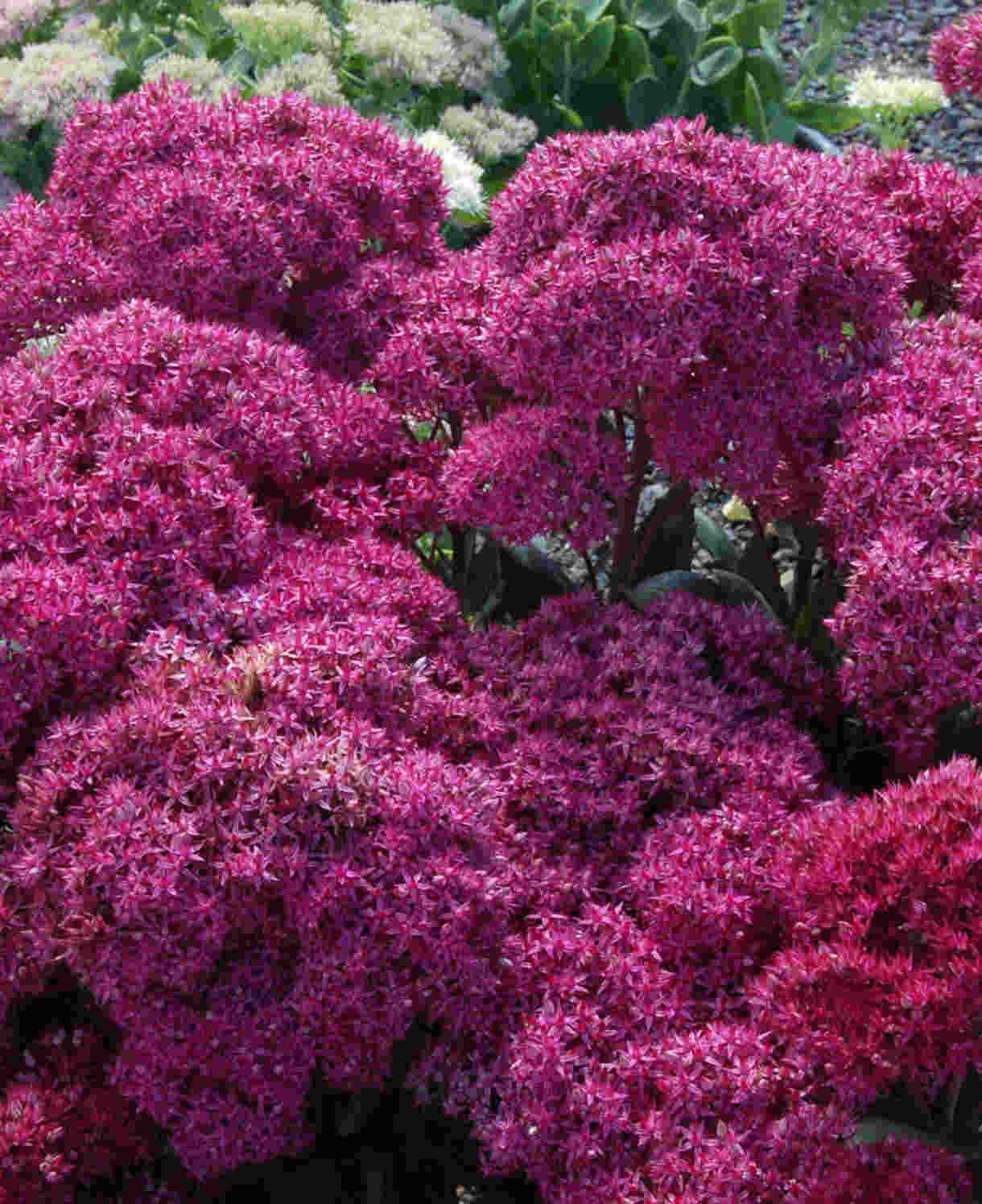
How to care for Sempervivum
Pruning and Deadheading
None required.
Watering
Water on first planting, after which this drought tolerant succulent tends to be very self-sufficient.
Container-grown sempervivum will appreciate a little watering during hot, dry spells, though equally it can survive without.
Do not water your sempervivum during winter, unless you are overwintering it indoors, in which case keep barely moist (see next section).
Cold Protection
Sempervivum is extremely hardy and, provided it is given sufficient drainage, able to withstand a UK winter without the need for protection.
The slight exception to this is the softly hairy, or ‘cobweb’ types, which struggle with excessive wet and will need to be grown in a container so they can overwinter indoors (an unheated greenhouse or conservatory is ideal). Water very sparingly during this time, just enough to prevent the compost drying out completely.
Pests and Diseases
Sempervivum is generally problem-free.
How to propagate Sempervivum
Each rosette of sempervivum is monocarpic, meaning it will die after flowering, though the plant naturally replenishes itself by producing offsets (new, baby rosettes) on lateral runners. Exploiting this habit is a quick and easy way for gardeners to produce new plants.
- In spring or early summer, snip offsets from the parent plant.
- Pot in gritty mix as described in the ‘How to plant sempervivum’ section above.
- Keep moist and out of direct sunlight until they have established (usually around 4-6 weeks).
- Plant into ground or permanent container.
Common Sempervivum questions
How long does it take sempervivum to grow?
An individual sempervivum rosette will reach flowering maturity in around 3-5 years, though can start to spread by offsets before this.
Can you grow sempervivum indoors?
You can indeed. An unheated conservatory, greenhouse, or porch is ideal, making sure your sempervivum gets plenty of bright sunlight throughout the day.
Can you grow sempervivum in pots?
Very much so. Sempervivum make incredibly fuss-free and reliable container plants. Follow our cultivation advice above for best results.
